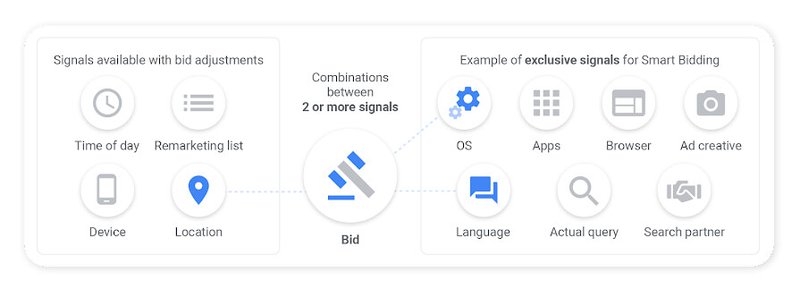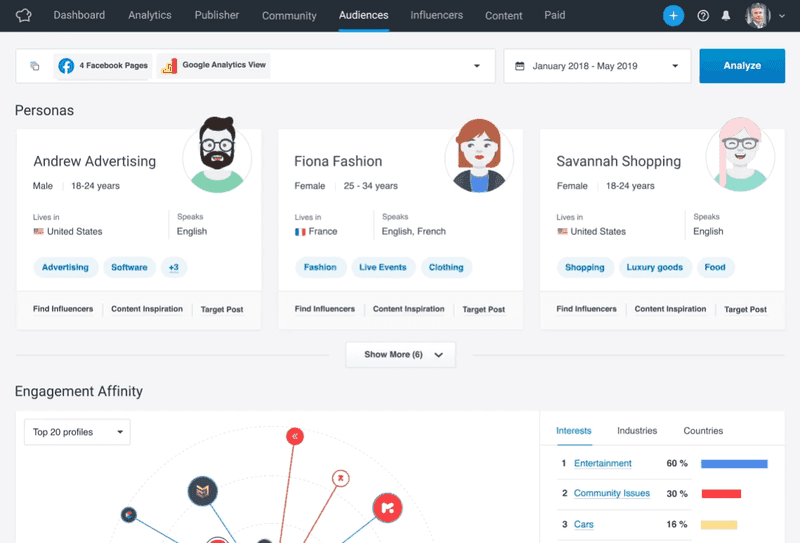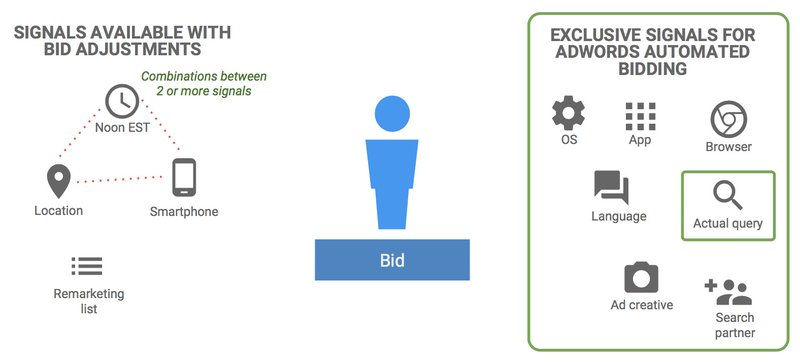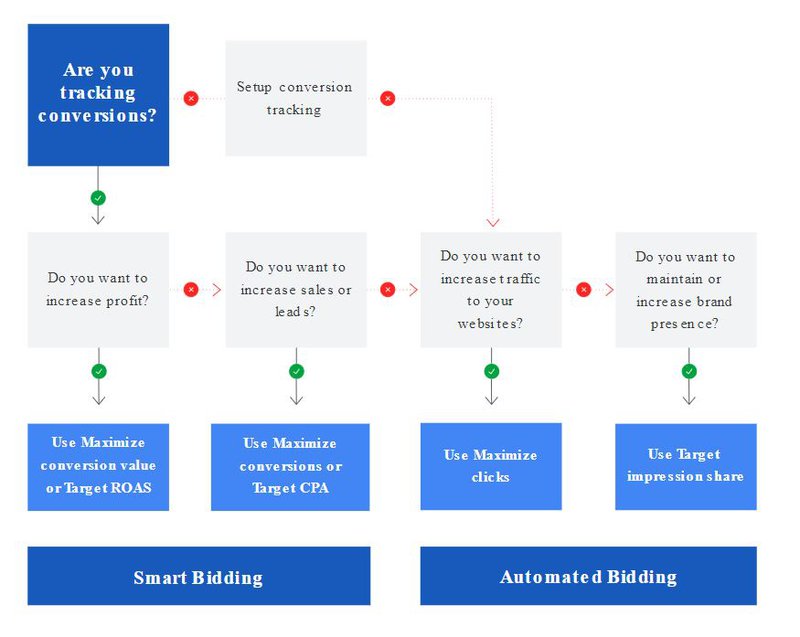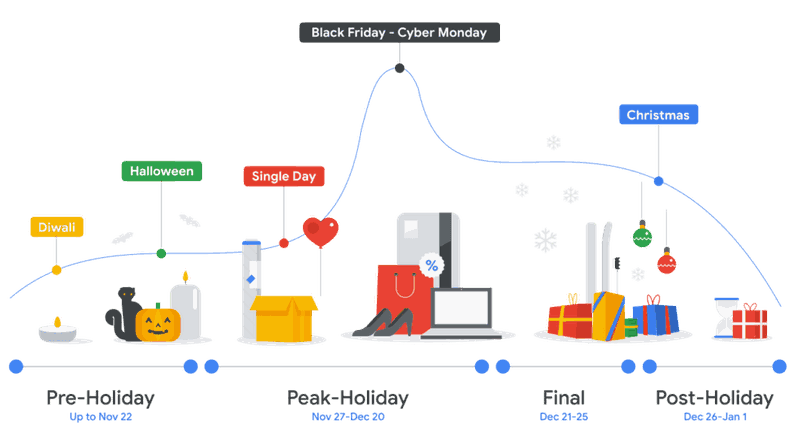11 Best Google Ads Bidding Strategies + Expert Tips [2025]
Choosing the right Google Ads bidding strategies is crucial for your PPC campaigns. Here's a quick guide on how to make the right decision for your business!
Published November 5, 2024.
![11 Best Google Ads Bidding Strategies + Expert Tips [{year}] main image](https://entail.mayple.com/en-assets/mayple/63d92417279d65f40a2288f1_googleadsbiddingstrategies1_fb4ec40b966edd0119f980595327fd53_2000-1699518572195.jpg)
Imagine you're on one of those TV auctions where an auctioneer is yelling at you, and you're trying to bid on items you want.
That's what happens behind the curtains of Google Ads - only there's no auctioneer, just lines of code working to place bids and show your ads to your audience, according to your chosen bidding strategy. If you win, you pay - and you can take home clicks, conversions, or downloads.
Knowing which Google Ads bidding strategy to pick or which Google Ads expert to work with can be baffling, and that’s why we wrote this guide. Here’s our breakdown of the top bidding strategies, tips, and best practices to use for your Google Ads campaigns.
How does Google Ads bidding work?
Google is the biggest pay-per-click advertising platform in the world. And like most digital advertising platforms, Google Ads works on a bidding system.
When a user searches for something on Google, advertisers compete for the opportunity to show their ads. The rules are relatively simple: if you bid more money and have a good ad score, you get a better ad placement (in Search or throughout the Google Display Network).
The entire bidding process is automatic and the algorithm takes into account various factors, such as:
- Quality score
- Ad and landing page relevance
- Target audience relevance
- Competition
Based on all these factors, Google Ads decides which ads to show and how much to charge for each click.
But there is some flexibility. You can control their bids and adjust them to reach their marketing goals. For example, if you want to appear more often in search results and display ad networks, you can increase the bids on specific keywords or placements. Also, you can lower their bids for less competitive terms and placements if you want to save money.
Depending on the type of campaign, advertisers can also adjust their bidding strategies according to the performance of their ads. For example, if an advertiser wants to maximize clicks, they can use manual CPC or automatic bidding strategies (like Target CPA or Maximize Conversions). This will help them find the most cost-effective way to reach their advertising goals.
Manual vs automated bidding
There are two types of Google Ads: manual and automated.
What is manual bidding?
Manual bidding is when an advertiser sets the maximum amount they’re willing to pay for each click on a keyword or placement. The main advantage of manual bidding strategies is that they give advertisers more control over their Google Ads budget and allow them to adjust bids on specific keywords.
The downside is that manual bidding can be time-consuming and prone to human error. Plus, it might be difficult to stay on top of changes in the market.
What is automated bidding?
Automatic bidding takes the manual work out of the picture and lets Google Ads automatically adjust bids in real-time to achieve the best results. This can be done with various strategies, such as:
- Target CPA
- Target ROAS
- Maximize clicks
- Maximize conversions
Automatic bidding is less time-consuming and can be more accurate than manual bidding. On the flip side, once you leave your money in the "hands" of an algorithm (in this case, Google), you may not be able to track the performance of your campaigns as accurately if you would be doing it yourself.
What is Smart Bidding?
Smart Bidding is an automated bidding system created specifically for Google Ads. It takes into account various factors, including the user’s search query, device type, and location, to adjust bids in real-time and find the most cost-effective way to reach marketing goals.
Google Ads bidding best practices
Here are some best practices that can help you optimize your campaigns and find the most cost-effective way to reach your goals.
Get your conversion tracking in order
You should make sure your conversion tracking is up and running - this is essential because all your data can be skewed without it. Test and double-check to be 100% certain your tracking is in order.
Set realistic goals
A lot of people think PPC is a "quick win". Sure, it's quicker than Search Engine Optimization, but it does need time to start working.
When you start running your first Google Ads campaigns, you have no real data: your knowledge of what works and what doesn't is a blank slate. The more you test, the more information you gather - and the more you can optimize your campaigns.
So, before jumping into PPC, set realistic goals. Don’t expect to get millions of clicks in a short time frame (and for pennies too!). It's not going to happen. Keep your feet on the ground and set clear, achievable goals.
Double-check your attribution model
Your attribution model defines how your campaigns, keywords, and ads connect to conversions. Remember that your attribution model should be related to your goals, and it should support them - not function as a parallel vertical of your work.
Understand your target audience
Spend time understanding who your target customers are. Research their needs and use them to tailor your campaigns. If you know who you’re targeting, you can design better campaigns from every point of view: targeting, copy, and design.
Opt for a simple account structure
The simpler your account structure is, the easier it will be for you to check, measure, and adjust your campaigns and bidding strategies according to your results.
Optimize for high-quality ad placements
There's no secret recipe for getting the best ad placements. However, tactics like these can help:
- Adjust your bid strategy
- Improve your ad and landing page copy and relevance
- Narrow down your demographics
- Test different ad formats and see what works best
Conversion rate optimization can make a huge difference in your click-through rates and conversion rates - whether in search campaigns or on the Display Network. What's more, when you get a conversion rate increase, you can better assess how to run future campaigns, as you have more data on what works for your target audience.
Create different bidding strategies for each campaign
Not all campaigns are created equal. Every single campaign should have its own goal and bid strategy. For example, if you’re running an awareness campaign, you should use a different bid strategy than the one you use for your Google Shopping campaign.
Adjust bids according to performance
No matter your bidding strategy, you should continuously monitor performance and adjust bids in response. If an individual keyword or ad is underperforming, decrease the amount of money you put into it (or stop the campaign altogether and then re-adjust).
Top 11 Google Ads bidding strategies
Here are the 11 most popular strategies to adjust your bids and improve the performance of your campaigns.
1. Target CPA (cost per acquisition)
This is one of the most common strategies where you tell Google to get aim for your cost per action (click, signup, purchase) or actual acquisition. Generally, this strategy is best when you want to hit targets and get leads.
The pros of using CPA bidding include:
- You can set your campaigns to aim for conversions (signups, mobile app downloads, etc.), for your daily budget, automatically
- The algorithm will use your conversion tracking data to get you more conversions at a lower cost and avoid unprofitable clicks
This bidding strategy requires a pretty healthy budget (approximately 2x your CPA target), so allocate enough budget for this one to get the data you need to optimize.
2. Target ROAS (return on ad spend)
Target ROAS is a smart bidding strategy that optimizes campaigns for a given return on ad spend. Advertisers set their desired return amount, and Google adjusts the bids according to the likelihood of an ad reaching that target.
Keep in mind that target ROAS is only available once your campaign has reached a minimum number of conversions:
- 15 in the last 30 days for Google Display Network campaigns
- 10/ day for App campaigns
- 75 conversions in the last 30 days for Discovery campaigns
- 30 conversions in the last 30 days for Video Action campaigns
This strategy is best for eCommerce businesses advertising multiple products, who need to show their ads to audiences already in a buying mindset. However, remember that Target ROAS is not the same as revenue, so it won’t necessarily bring you the most sales will never aim to bring you the best revenue (it just aims to reach a specific return on ad spend).
Target CPA and ROAS are no longer available as stand-alone bidding options as of July 2022. However, you can still opt-in for them as part of the maximize conversions and maximize conversion value bidding strategies.
3. Maximize conversions
The maximize conversions bidding strategy is designed to get as many conversions as possible within the campaign budget limit (regardless of the cost per action or CPA). Google will adjust bids according to their algorithms’ predictions of which clicks will most likely lead to conversions.
This is an excellent option for campaigns with conversion tracking enabled, focused on increasing the conversion rate, as well as for brands with a limited budget.
This bidding option will get you more conversions - but not always at the best price. The reason is that Google AdWords' algorithm aims to target the people most likely to buy, so it might sometimes overshoot your daily budget.
4. Maximize conversion value
This strategy is designed to get the highest possible conversion value within a campaign budget. This is different from maximizing conversions, as it optimizes for conversion value instead of the number of individual conversions. So, instead of targeting audiences likely to buy, Google will shoot for audiences likely to buy valuable items.
Be careful when you use this strategy because Google could overshoot your advertising budget, the conversion cost might be higher, and it could lower your ROAS.
5. Maximize clicks
This strategy is meant to get as many ad clicks as possible within your campaign budget. This is an excellent bid option to pick when you have a good conversion performance, and you're looking to tap into new audiences or get more data.
It's also an efficient way to drive more traffic to your site or landing page. The clicks you get with this bidding option might not always be the most valuable, so remember to keep an eye on your conversion numbers and ROAS and make sure your entire budget isn’t allocated exclusively to this strategy.
6. Maximize CPM (cost per 1,000 impressions)
Maximize CPM is a bidding strategy that helps you focus on building awareness campaigns. When you choose this target cost option, you will be charged an average price for 1,000 impressions
TCPM bidding is available for Google Display Network ads, as well as on YouTube. Remember that you will still be charged even if your audience skips your ad.
7. Maximize viewable CPM (cost per 1,000 impressions)
Viewable CPM (or VCPM bidding) is focused on getting the highest possible impressions at your given daily budget for your Google Display Network ads. This option is one of the best for building an awareness campaign because you will not pay for video views from people who skipped the video ad.
Note that while the cost of a CPM-driven campaign is predictable, there are better strategies than this if you're going for conversions or even a high ROAS.
8. Manual cost per click (CPC)
The manual CPC strategy allows you (or your Google Ads agency) to bid at the ad group or keyword level. One of the main advantages of this type of bid is that it offers you a granular level of control. Plus, your maximum CPC is the most you will be charged per click (and you will likely be charged less).
On the flip side, this strategy requires more time and energy from your end, as it doesn't leverage Google's algorithms to find the most likely convert users.
9. Enhanced cost per click (ECPC)
The enhanced cost-per-click strategy is an automated version of manual CPC bidding. When you opt for this strategy, you allow Google to increase or decrease your bid according to how likely it is for a click to turn into a conversion.
ECPC can help you reach more people and increase your CTR (click-through rate) and CVR (conversion rate). Yet, it’s not always a profitable option, as Google might increase your cost per click (to target people likely to buy).
10. Maximize CPV (cost per view)
Maximizing CPV bidding is a strategy for those who want to build awareness with YouTube video campaigns. It will charge you for views, but you will not pay if the user skips on the video.
This strategy tends to be quite cheap, which makes it a viable option if you want to reach a broader audience. Still, you will not get many (if any) conversions when you opt for a CPV bidding strategy.
11. Target impressions share
The target impression share is a smart bidding strategy that sets your bids to reach your impressions goal. If you target impression share, here are three types of share strategies to know:
- Top of the page
- The absolute top of the page
- Anywhere on the Google SERP (search engine results page)
With this strategy, you set a maximum cost per click, but make sure it’s not too low (as this will limit your bids). At the same time, not setting a maximum CPC can increase your ad spend - so make sure to find the right balance.
This strategy is essential when you want to bid on brand keywords and appear at the top of the search engine page as often as possible. Still, remember that targeting impressions share can be expensive and might not always lead to conversions.
8 tips for Google Ads bidding to get you started
Want to make sure your Google Ads bids are spot on? Here are some tips to keep in mind before you set your bidding strategy:
1. Use bidding automation rules
Bidding automation makes your campaigns easier to manage and less time-consuming. For example, you can set up a rule so that Google increases or decreases your bids according to the performance of your ad groups, campaigns, or search terms.
2. Bidding adjustments
Bid adjustments allow you to fine-tune your bids based on certain factors. For example, if you want your ads to appear more often in the mornings, you can adjust your bids accordingly.
3. Use bidding scripts
Bidding scripts are code snippets that allow you to automate and adjust your bids in bulk. This saves you from manually changing the bids of each keyword or ad group, enabling you to adjust thousands of bids at once.
4. Leverage seasonal trends
If you want to make the most out of your campaigns, it's important to take advantage of seasonal trends. For example, if you sell Valentine's Day trinkets, you can adjust your bids during the holiday season to reach more customers, as people will be looking for gifts.
Pro Tip: To better spot seasonal trends set up a dashboard on Google Data Studio and compare data from all of your marketing channels in one place.
5. A/B test different keywords and offers
You don't have a crystal ball, so the best thing you can do is A/B test keywords to see which works best for your business. Make sure the data you gather is statistically relevant
6. Bid on branded keywords
Bidding on branded keywords can sometimes be expensive. However, it can also be a great way to reach more people familiar with your brand and strengthen your brand's position in search engine queries.
7. Use portfolio bidding
A portfolio bid strategy is when you create one bid strategy and apply it to multiple campaigns. It’s a great way to manage the bids of multiple campaigns at once. With a portfolio strategy, you can allocate certain daily budgets and prioritize certain groups of campaigns all at once.
8. Use remarketing lists (RSLA)
A remarketing list is a list of visitors in your target audience who have interacted with your website or app. You can use this to increase the bids on some campaigns, as you know that these visitors are already familiar with your brand, so it's more likely that they will take action.
Unlock the power of bidding with the right expert
While there are many bidding strategies, choosing the best one(s) depends on your campaign goals and performance. Once these two elements are in order, you can experiment and adjust your bidding methods accordingly.
There's no set recipe or standard strategy for Google Ads - it's all trial and error. And that’s why you need a top-notch Google Ads expert at your side that can help maximize your chance of success without burning through your daily budget.
Looking for a Google Ads pro or agency? Look no further, the vetted marketers at Mayple have a track record of success in optimizing campaigns for hundreds of brands. Contact us today and get the help you need with your Google Ads campaigns!

